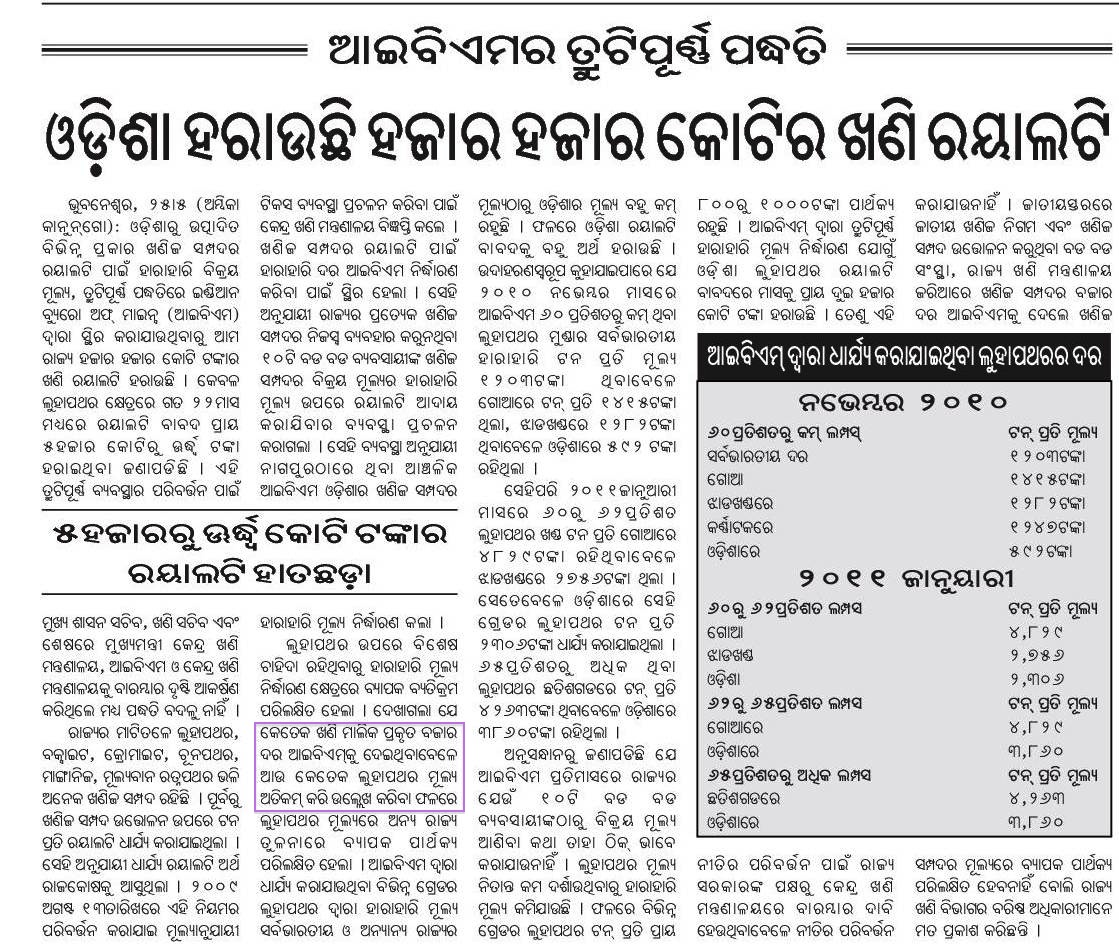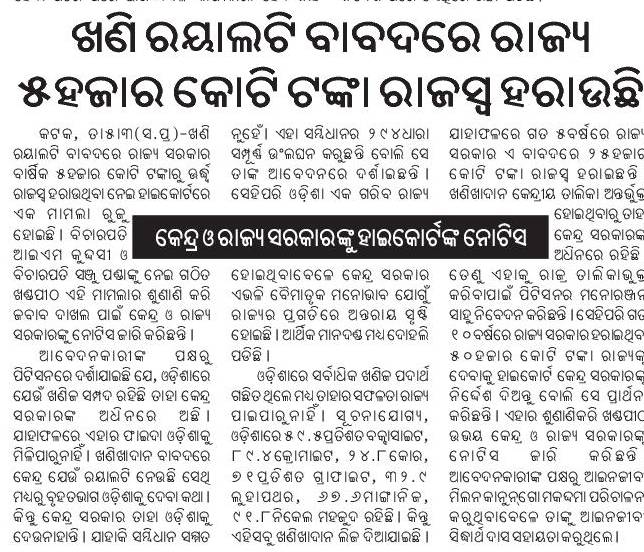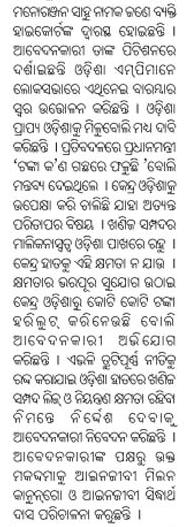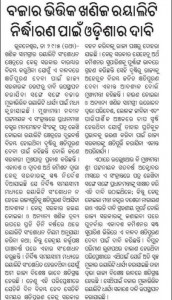Odisha CM Naveen Patnaik vents against UPA and NDA; Beginning of a sustainable third front?
CENTER & ODISHA, Chief Minister's actions, Defence establishments, Demanding equitable treatment, Mine royalty and cess, Railway network in Odisha 6 Comments »This is interesting. Naveen Patnaik has a strong election winning record in Odisha and based on the current ZP and Panchayat elections, it seems he will also win big in the next elections in Odisha. He is suave, gentle, has a good natinoal image, not prone to histironics (like Mamata Banerjee), not an ayaaram-gayaram (i.e., does not change alliances often like AIADMK and hence reliable), speaks good English, and Odisha being a smaller state other state leaders will not think he is too powerful. So he may be an acceptable PM candidate for a third front consisting mainly of various regional parties. He is right about the problems with the two national alliances in India. The big problem with UPA is its multiple power centers, especially with the all power no responsibility position of the Yuvraj. He and his cronies have single handedly stopped major development in Odisha; especially the Vedanta University. The other problem with national parties is that their leadership in Delhi control the states where they rule. As a result, while those states do get some extra benefits, they are manipulated by the center to agree to their wishes, even if it may be detrimental to the state’s interest. In the context of Odisha a UPA govt in Delhi can push a Congress govt. in Odisha to give mining leases to companies of its choice.
At present the Odisha government is able to defy them to some extent. Even in case of coal blocks where the center unilaterally allocates the blocks, the state is able to put its terms, sometimes vocally, as the companies need the help of the state in getting the land and various clearances. That is the reason MCL and NTPC have agreed to establish medical colleges in Odisha. If there was a Congress government they would not be as vocal and may have just signed on the dotted lines as dictated by the central leadership. Of course one has to also think of the country as a whole. But in the past what has happened is that in the name of "national interest" Odisha has suffered greatly, some of it partly overcome by the non-Congress leadership in Odisha.
Examples of this are:
- The freight equalization policy that harmed the industrialization of Odisha.
- The low royalty rates of minerals.
- Lack of port development. (There is folklore about how Biju Patnaik unilaterally went ahead to establish Paradeep port)
- Also related is the disregard of the military about accommodating port development near their sites.
- The opposition of Rahul Gandhi and his cohorts to industrial development in Kalahandi and Vedanta University.
- Lack of development of Railways in Odisha.
Some of the above were overcome when there was a third front type government at the center. The ECOR zone was one of them. Since the ECOR zone was established things have looked up in the Railways sector in Odisha, but there is lot more to be done.
In the mining and metal based industry sector, since the BJD government in Odisha has become very discriminative in giving leases and installed the value added policy there has been a beeline of investment (some of it yet to come to fruition). The government has seen through the past games of Tatas and now have forced them establish a plant in Odisha (hence their upcoming Kalinganagar plant) and yet have not given them any new leases. SAIL and NALCO are not having an easier time either.
So the point is that in our current set up where leadership in Delhi (true for both UPA and NDA) often dictates the state leaders of the same party to do what it wants, the state may lose out in the name of national interest. On the other hand *honest* regional parties can guard the state’s interests as has happened in Odisha. More and more states are going that way.
However, its not clear what kind of central government a coalition of regional parties will be able to form and how well will that work at the national level.
More ramblings later. … (See http://www.orissalinks.com/orissagrowth/archives/5458 for related thoughts.)





